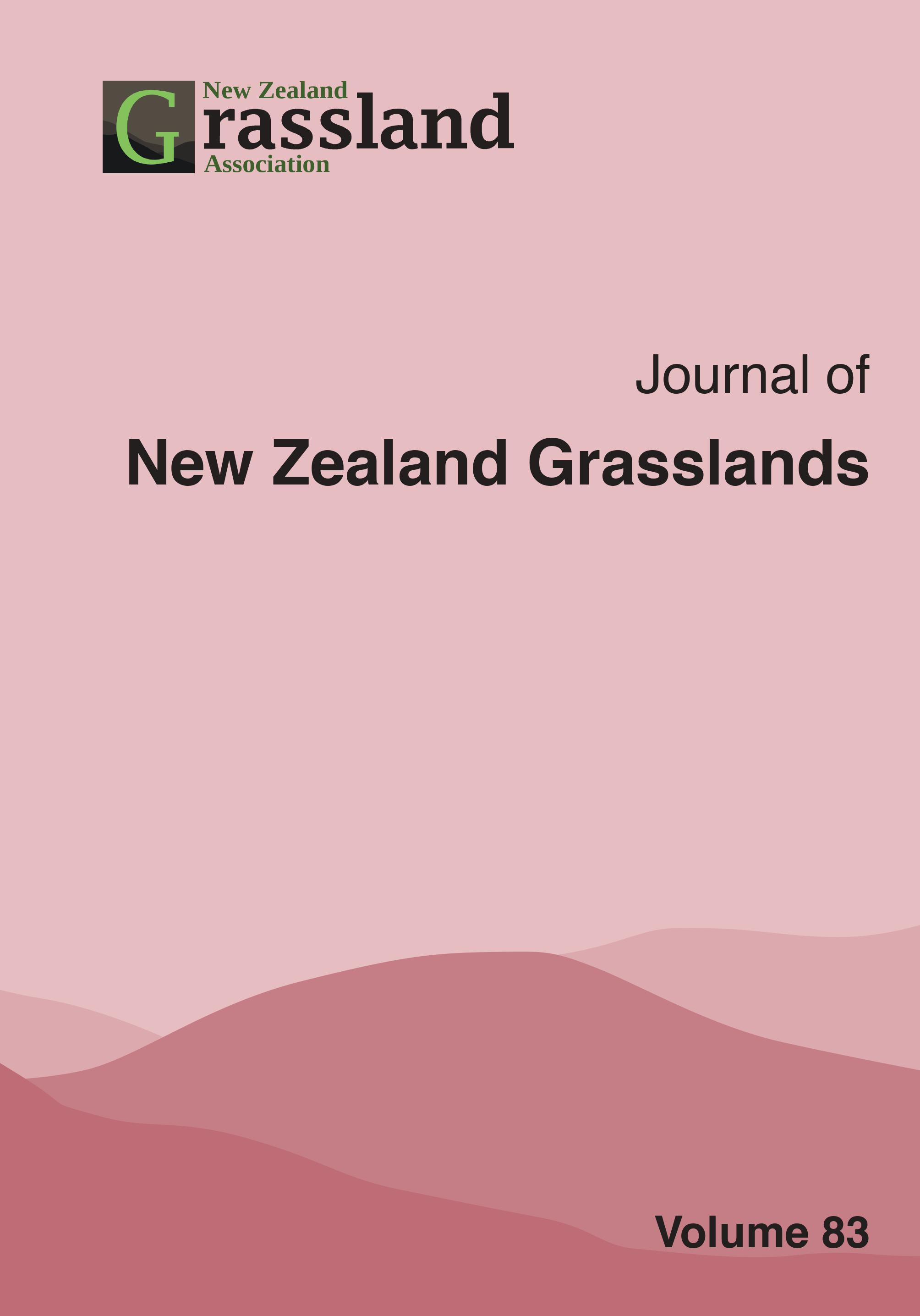Growth rates and persistence of annual and perennial clovers
DOI:
https://doi.org/10.33584/jnzg.2021.83.3494Abstract
This study quantified the temporal productivity of monocultures of four annual and two perennial clover species in a summer dry environment at Lincoln University, Canterbury, New Zealand. Clovers were ungrazed in the first year to enable natural re-establishment of the annuals, but grazed in the second year.
In 2019 clover cultivar affected (P<0.001) yield in early spring (24th September) with ‘Viper’ balansa (Trifolium michelianum) producing 5.0 t DM/ha compared (P<0.05) with 3.5 t for ‘Arrotas’ arrowleaf (T. vesiculosum), 3.2 t for ‘Antas’ and ‘Woogenellup’ sub clovers (T. subterraneum), 1.6 t for ‘Kopu’ white clover (T. repens) and 1.2 t for ‘Relish’ red clover (T. pratense). ‘Arrotas’ grew 111 kg DM/ha/d from 14th to 28th August, ‘Viper’ grew 123 kg DM/ha/d from 28th August to 24th September and then 183 kg DM/d to 9th October.
After a dry autumn in 2020, ‘Kopu’ white and ‘Relish’ red persisted, but only sub clovers ‘Napier’ and ‘Woogenellup’ successfully re-established. By 17th September, accumulated dry matter yield (t) differed with ‘Woogenellup’ sub (4.3) and ‘Relish’ red (3.7) producing more than ‘Kopu’ white (2.8) and ‘Napier’ sub (2.2). ‘Woogenellup’ sub clover grew at 72 kg/ha/day from 20th August to 17th September, which was more than twice the rate of the other clovers (~30 kg/ha/day). These four clovers continued to provide grazable herbage through the second year.
In 2020 the re-establishment of arrowleaf, balansa and Persian (T. resupinatum) clovers was poor, and each yielded <0.5 t/ha by 17th September, with their plots dominated by weeds. These results confirm monocultures of top flowering annual clovers are productive in their first year but poor re-establishment may occur in their second year. They may therefore be best suited as one-year specialised crops for grazing or conserved feed.
The earlier growth profiles of the annual compared with perennial clovers suggests there is potential to increase their use in summer dry environments to meet early spring feed requirements of ewes and lambs.
Downloads
Downloads
Published
How to Cite
License

This work is licensed under a Creative Commons Attribution-ShareAlike 4.0 International License.
Copyright
This work is licensed under a Creative Commons Attribution-Non Commercial-NoDerivatives 4.0 International License. Rights granted to the New Zealand Grassland Association through this agreement are non-exclusive. You are free to publish the work(s) elsewhere and no ownership is assumed by the NZGA when storing or curating an electronic version of the work(s). The author(s) will receive no monetary return from the Association for the use of material contained in the manuscript. If I am one of several co-authors, I hereby confirm that I am authorized by my co-authors to grant this Licence as their agent on their behalf. For the avoidance of doubt, this includes the rights to supply the article in electronic and online forms and systems.




